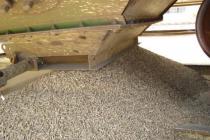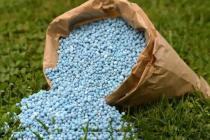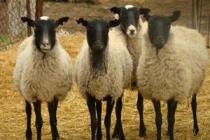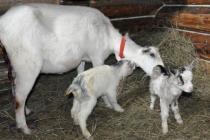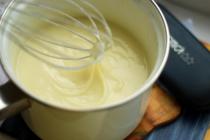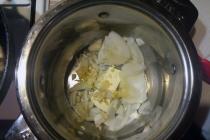Breweries operate in many cities of Russia. Currently, there are about 400 of them in the country. Of course, such enterprises supply the market mainly with beer. However, factories of this specialization also sell the by-product of preparing this drink. The waste remaining during the production of wort is called beer grains. This product is very popular among farmers.
Main Applications
The spent grain product is relatively inexpensive. It can be used in a variety of areas of the national economy. For example, brewer's grains are often used to improve soil properties in agricultural fields. Also, such waste is a valuable feed product for farm animals. Made using spent grains and a sugar substitute for people with diabetes.
Beer grains are also used in the food industry. For example, flour dietary products are made with its use. In this case, spent grain is used as a valuable source of dietary fiber. In some cases, this type of brewing waste is also used as biological fuel.
The scope of application of the grain is therefore quite wide. But most often it is used in agriculture.
What is the price
As already mentioned, the price of spent grains is relatively low. Agricultural enterprises have the opportunity to purchase wet waste of this type for literally pennies directly from the factory. The brewery's raw grains are sold cheaply primarily because they cannot be stored for too long. This product turns sour in literally 3-4 days. Disposal of spent grains is quite expensive - about 100 rubles. for 1 m 3. Therefore, it is much more profitable for breweries to simply sell spent grain to farmers for a symbolic price.
The raw product of this type is therefore very inexpensive. However, many breweries also have grain processing workshops as part of their production. Upon arrival here, brewery waste is dried and granulated. Such a product can already be stored for a long time and transported over long distances. From 3-4 tons of raw beer grains, approximately 1 ton of dry grain is obtained. Such granules are already more expensive - about 12 rubles. per kilogram.

Composition of grains
The value of this product for agriculture lies primarily in the fact that it contains a large amount of proteins and BEV - 23 and 43%, respectively. Also, the composition of brewer's grains includes fats - 8%, fiber - 14%, and ash - about 3%. In addition, the product contains a certain amount of microelements such as zinc, iron, copper, phosphorus, calcium.
How are fertilizers made?
To improve soil properties in the fields of agricultural enterprises, raw brewer's grains are usually used. In this case, the product is preliminarily subjected to anaerobic fermentation, microbial fermentation, or processing by compost worms. The result is a very valuable fertilizer for agricultural and garden crops. Sometimes spent grains are composted in a natural way - without the use of any starter cultures. Raw brewery waste cannot be used to fertilize fields. This product is toxic both to the plants themselves and to earthworms that improve soil structure. Fermented spent grain is also an excellent food for the latter.

Use as a top dressing
Most often, large agricultural enterprises use such compost to fertilize fields. Gardeners, judging by reviews, use fermented beer grains mainly only for feeding grapes. It is this garden culture that responds especially well to it.
It is also useful to use fertilizers of this variety for feeding edible oyster mushrooms. In this case, the spent grain is used directly to prepare a substrate for mycelium. At the same time, it is mixed with seed husks and straw. The use of spent grains when growing mushrooms can increase their yield by up to 70%. At the same time, the percentage of protein and fat content in the oyster mushrooms themselves increases significantly.
The use of brewer's grains as an ameliorant
In Soviet times, the soil in the fields was, unfortunately, not treated very carefully. Many formerly fertile areas therefore over time turned into salt marshes unsuitable for growing crops. Spent grains are often used to bring such fields back into agricultural production. It is used to improve natural salt marshes.

The benefit of spent grain in this case lies primarily in the fact that it increases the acidity of the soil. This happens mainly due to the fact that during the process of overheating, a lot of carbon dioxide is released into the soil. In addition, grains, when added to the soil, significantly increase the content of nutrients in it. Another advantage of using such fertilizer is that it improves the structure of the soil, making it looser.
Application as animal feed
Improving soil composition is not the only area of use of brewer's grains in agriculture. Very often this product is used in animal husbandry. In its pure form, dry and wet grains are not used in this case. Brewery waste is used mainly for the preparation of feed. This is primarily due to the fact that spent grain has a bitter taste. Therefore, animals eat it reluctantly in its pure form. And reviews from farmers confirm this.
The value of brewer's dry grains when used as feed for small cattle, cattle and pigs lies primarily in its rich composition. The nutritional value of this product is approximately 0.8 feed units. The advantages of spent grain used as feed for dairy cows include the fact that it does not change the taste, smell or fat content of milk at all.
Livestock farmers consider another advantage of this product to be its ability to improve the metabolism of pigs, cattle and small cattle. The use of spent grains as feed, among other things, also stimulates the body's absorption of phosphorus and calcium.
The spent grain product is therefore useful. However, when using it as feed, some dosage recommendations should be followed. So, the diet of cows should include no more than 20%, pigs - 11%.

Spent grains as poultry feed
In this case, the use of such a product allows you to increase weight gain and egg production. Spent grains are usually also fed to birds as part of mixed feed. In its pure form it is used for chickens, geese and turkeys, but only after preliminary extrusion - calcination under pressure. Temperature treatment improves the taste of spent grain. As a result, the bird eats it more readily, judging by the reviews. It is believed that such a product can be introduced into the diet of chickens, turkeys and geese in an amount of 10-12% of the total feed mass.
Features of storing wet grains
Such a product, as already mentioned, is purchased mainly by those agricultural enterprises that are located near breweries. You can purchase wet spent grain at a very low cost. However, it is important to store it correctly. In the summer, spent grain, according to recommendations for animal care and feedback from farmers, should be fed to livestock on the same day. Use of stale, damp brewer's grains can cause digestive upset in pigs, cows and sheep.

In winter, wet grains can be stored at temperatures above 0 0 C for up to two days.
Dry product storage
Such pellets should only be stored in cool rooms. The air humidity in the warehouse should not be too high. This product is flammable. Therefore, storing dry pellets near open sources of fire is not allowed. It is not advisable for the product to be exposed to direct sunlight. Dry granulated grains are usually stored in polypropylene bags.
Granulation technology
Thus, it is more advisable to use spent grains in dry form. Relatively simple technology is used to granulate such brewery waste. The grains are dried as follows:
- the wet mass is pressed in a centrifuge;
- The brewer's grains are dried in a special apparatus;
- the product enters the granulator.
Sometimes spent grain is sold simply in loose dry form. However, the granular product is still valued higher. Such grain is easier to store, transport and dose when used. Also, the granular product absorbs much less moisture. Therefore, it can be stored longer.

Instead of a conclusion
Today, unfortunately, not all breweries have workshops for drying spent grains. Meanwhile, granulating this product can be quite profitable. Instead of throwing away spent beer grains, polluting the environment and paying a lot of money for disposal, it is much more profitable for enterprises to sell it in dry form to farmers. Therefore, organizing drying shops can become a very profitable business. And a separate enterprise of this type, with not too high costs at the initial stage, can bring its owner significant income.
A collection of information from open sources (listed sequentially in the text). Translation by Elena Babenko, especially for
There is not a lot of material on beer grains; this article contains information from three different sources.
Source #1: Deutsche Trebe r Union):
Spent grains - feed with many benefits
Beer grains, thanks to their valuable nutrients and special effects, are a good aid in feeding. Here are its advantages:
- Lots of high-quality protein, low breakdown of protein in the rumen
- Contains as much energy as concentrated feed
- High content of natural active substances
- Increases consumption of basic feeds
- Is ;
- Diet food
- Healthy food
Nutritional value of spent grains
Feed value of brewer's grains for dairy cows and fattening cattle
Feed rating system: net lactation energy (NEL), metabolizable energy (ME/MJ)
Dry matter when supplied fresh from 21 to 31% depending on the variety and origin
Table 1. Feed value per kg dry matter
1) Feed tables DLG, ruminants, 1997
2) Dutch research institute ID-DLO Lelystad
Benefits of silage grains
- Beer grains have a dietary effect, prevent and treat disorders of the digestive tract; it has an absolutely positive effect on metabolism.
- Regular use of ensiled brewer's grains at the same nutritional level per head per day has a positive effect on milk yield.
- In cattle fattening, brewer's grain also provides a significant increase in average daily weight gain.
- 1 kg of dry grain silage grains corresponds in feed value to 1 kg of dairy productive feed with a crude protein content of 25% and net lactation energy of 6.7 MJ.
Ensilage of spent grains
This is a simple and cheap way of preservation. The following conditions must be met:
- Quick filling of silage containers (up to 200 t possible in 2 days)
- Possible silage on concrete
- It is necessary to cover it with film to block the entry of air and strengthen it on top with sand/tires, etc.
- It is necessary to ensure sufficient and rapid removal of feed from the silo trench
- The silo trench should not be higher than 1.5 m (if possible)
Consumption standards for ensiled brewer's grains
Table 2. Consumption rates for silage grains per head per day
Source #2: Eng. Georg Mitterbauer, Upper Austrian Chamber of Agriculture
Feeding spent grains to dairy cows
Spent grains are a by-product of beer production and a “concentrate” containing a lot of protein. It can be fed fresh, ensiled or dry.
Fresh spent grains should be supplied to the facility at least once a week, or better yet twice, from a nearby brewery. During the warm season, food spoils within a few days (growth of yeast and mold). Labor costs are relatively high (weekly deliveries). Beer grains are best stored in plastic containers. Feed is most often distributed to cows by hand.
This method is most often used in terms of working time efficiency. Ensilage into small or medium-sized silo trenches. Spent grains ensile rather poorly. The addition of 3-4% dry sugar beet pulp helps improve ensiling ability, which increases the sugar content. In addition, the surface must be treated with diluted formic or propionic acid (0.5 l/sq. m). Also, adding a thin layer of salt to the surface can improve the preservation effect. After which you need to cover the trench well with film. The size of the silo trench must correspond to the volume of daily feed removal in order to avoid the process of re-heating the feed. The daily excavation speed should be at least 10 cm.
Dry brewer's grains
This product is commercially available in the feed market but is rarely available. Since drying costs are high, dried brewer's grains are a rather expensive product.
The use of brewer's grains in feeding dairy cows
- Ensure storage in a cool place (the silo trench with a reinforced bottom should not be located in direct sunlight)
- Correct amount: For dairy cows, the maximum amount is about 1.5 kg of DM per head per day, which is about 6 kg of raw brewer's grains. In experiments it was found that with a higher amount of grains fed, the total consumption of the diet decreases. This has also been proven time and time again in practice. In addition, the quantity of brewer's grain must be adjusted to the productivity level of the herd.
- Cows with a productivity of 15 to 20 liters receive about 3 kg of brewer's grains
- Cows with a productivity of 21 to 30 liters receive 4-5 kg of brewer's grains
- Cows with a productivity of over 30 kg receive 6 kg of brewer's grains. The level of this food in the diet is also affected by the quality and composition of the main feed. In any case, it is strongly recommended.
- The protein in brewer's grains is highly stable in the rumen. It contains a high proportion of digestible protein (nXP) in the small intestine. About 50% of crude protein passes through the rumen without being broken down and is a source of protein directly in the small intestine.
- Spent grains are suitable for high-energy diets containing corn silage, as well as medium to high yield pure grass diets.
- A high proportion of structural carbohydrates (a concentrated feed with a dietary effect that has a positive effect on the rumen) has a positive effect on rumen physiology and, as a source of protein, has a “diarrhea-inhibiting” effect.
Spent grains are well suited for fully mixed rations, especially when part of the feed is mixed in advance. In such cases, the main feed is pre-mixed with concentrates and can be stored for up to two to three months in a “new” silo trench. This method allows you to immediately take a large amount of fresh grain from the brewery and include it in a fully mixed diet.
Source No. 3: Internet publication dated 10/02/2009 in Elite. Magazine for milk producers
Replace concentrates with brewer's grains
Brewer's grains are a protein option with high rumen stability for every diet during periods of high soybean prices. With a daily feeding rate of 10-12 kg/head per day, approximately 2.4 kg of concentrates per head per day can be saved.
As a by-product of beer production, 2 million tons of spent grains are produced annually in Germany. This is the insoluble part of barley or wheat malt. Although the crude protein content is lower than in the most popular protein feedstocks - soybean or rapeseed meal - brewer's grains are a pure protein feed.
The spent grain is highly stable in the rumen. The proportion of Undegradable Crude Protein (UDP) is 40%, higher than canola products and pressurized soybean meal. The crude protein content in brewer's grains is on average 245 g/kg DM. Spent grains from wheat beer contain on average 5% more crude protein compared to spent barley grains (286 g/kg DM and 235 g/kg DM, respectively). Since this feed has a positive effect on animal health due to the presence of B complex vitamins in brewer's grains, it is widely used in various feeding strategies.
Table 3. Nutrient content of spent grains
Spent grains should either be fed fresh immediately or ensiled immediately after delivery. Thanks to this, spoilage of this valuable feed raw material can be prevented. Canning has the added benefit that during the summer, when more beer is consumed and therefore more spent grain produced, stocks can be stocked at a favorable price. Beer grains are a product containing a lot of water (21-23% dry matter). Drying it for use in feeding farm animals is not advisable from both economic and environmental points of view.
Typically, dairy cows are fed about 10 kg of spent grain, in some cases up to 15 kg per head per day. There may be an additional effect on milk production and the content of unsaturated fatty acids in milk. Thanks to the use of brewer's grains, you can save on concentrates, especially on expensive protein raw materials. When feeding 10-12 kg per head per day, this is approximately 2.4 kg of concentrates per head per day.
A silage-grass diet with brewer's grains can be presented in the following form:
- Grass silage 15 kg
- Corn silage 20 kg
- Hay 1 kg
- Beer grains 10 kg
- Rapeseed meal 1.2 kg
This diet is designed for 26 kg.
Another advantage of brewer's grain is its positive structural effect compared to concentrated feed. For accurate diet planning, a nutritional declaration is required, which is provided by suppliers.
I look forward to your feedback and comments. Thank you very much!
Currently, there are more than 400 factories in Russia specializing in the production of beer. During the production of this alcoholic drink, a large amount of various types of waste is generated. The lion's share of their mass is spent grain. Unfortunately, at the moment, in most cases, enterprises send it for recycling. Meanwhile, the product is very useful and can be used in various areas of the national economy. It is especially advisable to use spent grains as a fertilizer.
What is brewer's grain
Main characteristics
In its normal state, brewer's grain contains about 80% water. It cannot be stored in this form for more than three days. After a certain time (depending on the air temperature), the grain sours and loses its beneficial properties. Moreover, various kinds of toxins begin to accumulate in it. Therefore, it is impractical to transport this product over long distances. In order to avoid souring and reduce the weight of the grain intended for transportation, it is pre-dried. From 3-4 tons of wet mass, 1 ton of dry product is usually obtained. There is also equipment designed for the production of granulated brewer's grains.
Beer grains: composition
Beer grains actually contain a lot of different useful substances. Information about what exactly is included in the dried product and in what quantities can be obtained from the table below.
In addition, beer grains contain microelements such as:
- zinc - 105 mg/kg;
- iron - 205 mg/kg;
- copper - 15 mg/kg;
- phosphorus - 0.5 mg/kg;
- calcium - 0.37 mg/kg.
Also, brewer's grain contains a very large amount of amino acids (glycine, alanine, threonine, etc.).

Granular product
The advantages of such grains include, first of all, a long shelf life and low cost of transportation. The granular product is produced as follows:
- the raw grain is dried;
- the hard dry mass is ground into flour;
- The bulk product is compressed into granules using special equipment.
Main areas of use
In agriculture, brewer's grains are most often used for fattening pigs, small cattle and cattle. Thus, one of the main areas of its use is the production of compound feed. Also, spent grains are often used as fertilizer when growing crops. Another area of the national economy in which spent grain is used is the food industry. Most often it is used when baking flour products for dietary purposes. In this case, it serves as a valuable source of dietary fiber. Sometimes spent grain is also used as biofuel. Most often, it is used in this way by breweries themselves.

Use of spent grains in animal fattening
This product is not given to cows, sheep and pigs in its pure form. Typically, spent grain is simply included in various types of feed. In terms of its positive effect on the animal body, it is considered even more beneficial than bran. However, feeding it in large quantities or in its pure form is highly not recommended. Dairy cows, for example, are usually given no more than 6-8 kg per day.
Abroad, brewer's grains are often siloed in long narrow trenches. We do not use this method. However, when feeding pigs, lactic acid starter is sometimes added to dry grain. This increases the moisture content of the product, and therefore speeds up its digestibility.

Application in poultry fattening
Dry brewer's grains are used when raising not only but also poultry. Feeding it to laying hens increases egg production. By mixing brewer's grains into the feed for broilers, the meat yield increases. Brewer's grains are not given to birds in their pure form, just like to animals. Some of the disadvantages of this product may be that it has a bitter aftertaste. Therefore, the bird does not eat it very willingly. Meanwhile, correcting the situation is not particularly difficult. In private household plots, spent grain is added to mash in small quantities. In large poultry farms it is fed in the form of granular nutrient mixtures. The production of feed with the addition of brewer's grains and their use, thus, can increase the income of poultry farms.
Application as fertilizer
The use of this product for plant nutrition is considered appropriate, since it contains a very large amount of organic substances and microelements necessary for plant development. The undoubted advantages of beer grains as a fertilizer include its absolute environmental safety. Moreover, scientists have proven that this product is capable of increasing the nutritional properties and value of various crops.

Very often, summer residents use beer grains as a fertilizer for plants. In this case, the stillage is usually mixed with green plant matter, peat, household food waste, etc. After composting, the resulting mixture is used as an organic fertilizer instead of manure.
Use as an ameliorant
During the years of Soviet power, as a result of the use of ill-conceived management methods, many previously fertile chernozem soils turned into saline soils unsuitable for growing cultivated plants. Currently, scientists are looking for methods to correct this situation and return such areas to their original state. Organic reclamation of salt marshes is carried out using brewer's grains that have been stored for a long time. When it is introduced into the soil, the acidity level of the latter changes first of all. In particular, brewer's grain eliminates high alkalinity of the soil. At the same time, it also saturates it with the basic nutrients necessary for the development of plants.
Beer grains: price
It is not only the presence of a large amount of nutrients and microelements in its composition that makes it advisable to use this beer processing product in agriculture. Determines the profitability of using grain and its very low cost.
Agricultural enterprises located near breweries have the opportunity to purchase it for literally pennies. Alcohol factories themselves are trying to get rid of spent grain. After all, its disposal is quite expensive (up to 100 rubles per 1 m 2 of landfill). Granulated spent grain costs about 10 thousand rubles. per ton. The price of a dry product, depending on the region, is about 5-7 thousand rubles. per ton.

Thus, the use of brewer's grains makes it possible to reduce the cost of raising pigs, cattle, small cattle, poultry, etc. and significantly increase agricultural yields. This product has not yet found particularly widespread use solely due to rapid souring and the impossibility of transportation over long distances. Meanwhile, it is not difficult to correct the situation simply by installing equipment at breweries designed for drying and granulating spent grain. In this case, both the breweries themselves and many agricultural enterprises in the country will benefit.
Spent grain, thanks to its valuable nutrients and special effects, is a good aid in feeding
There is not a lot of material on beer grains; this article contains information from three different sources.
Source #1: German Association of Shot Suppliers (Deutsche Treber Union):
Spent grain is a feed with many benefits:
- Lots of high-quality protein, low breakdown of protein in the rumen
- Contains as much energy as concentrated feed
- High content of natural active substances
- Increases consumption of basic feeds
- Is a balancing feed;
- Diet food;
- Healthy food;
Nutritional value of spent grains
Feed value of brewer's grains for dairy cows and fattening cattle
Feed rating system: net lactation energy (NEL), metabolizable energy (ME/MJ)
Dry matter when supplied fresh from 21 to 31% depending on the variety and origin
Table 1. Feed value per kg dry matter
|
Index |
Brewer's grains, ensiled 1) |
Beer grains new data 2) |
|
ME (ME), MJ |
||
|
NEL, MJ |
||
|
Crude protein(XP), g |
||
|
Rumen Undegradable Protein (UDP), g |
||
|
Digested protein (nXP), g |
||
|
Rumen nitrogen balance (RNB), g nitrogen |
1) Feed tables DLG, ruminants, 1997
2) Dutch research institute ID-DLO Lelystad
Benefits of silage grains
· Beer grains have a dietary effect, prevent and treat disorders of the digestive tract; it has an absolutely positive effect on metabolism.
· Regular use of ensiled brewer's grains at the same nutritional level per head per day has a positive effect on milk yield.
· During cattle fattening, brewer's grain also provides a significant increase in average daily weight gain.
· 1 kg of dry grain silage grains corresponds in feed value to 1 kg of dairy productive feed with a crude protein content of 25% and net lactation energy of 6.7 MJ.
Ensilage of spent grains
This is a simple and cheap way of preservation. The following conditions must be met:
· Quick filling of silage containers (possible up to 200 t in 2 days)
· Possible silage on concrete
· It is necessary to cover it with film to block the entry of air and strengthen it on top with sand/tires, etc.
It is necessary to ensure sufficient and rapid removal of feed from the silo trench
· The silo trench should not be higher than 1.5 m (if possible)
Consumption standards for ensiled brewer's grains
Table 2. Consumption rates for silage grains per head per day
Source #2: Eng. Georg Mitterbauer, Upper Austrian Chamber of Agriculture
Feeding spent grains to dairy cows
Brewer's grains are a by-product of beer production and a "concentrate" containing a lot of protein. It can be fed fresh, ensiled or dry.
Fresh spent grains should be supplied to the facility at least once a week, or better yet twice, from a nearby brewery. During the warm season, food spoils within a few days (growth of yeast and mold). Labor costs are relatively high (weekly deliveries). Beer grains are best stored in plastic containers. Feed is most often distributed to cows by hand.
Ensiled spent grains

This method is most often used in terms of working time efficiency. Ensilage into small or medium-sized silo trenches. Spent grains ensile rather poorly. The addition of 3-4% dry sugar beet pulp helps improve ensiling ability, which increases the sugar content. In addition, the surface must be treated with diluted formic or propionic acid (0.5 l/sq. m). Also, adding a thin layer of salt to the surface can improve the preservation effect. After which you need to cover the trench well with film. The size of the silo trench must correspond to the volume of daily feed removal in order to avoid the process of re-heating the feed. The daily excavation speed should be at least 10 cm.
Dry brewer's grains
This product is commercially available in the feed market but is rarely available. Since drying costs are high, dried brewer's grains are a rather expensive product.
The use of brewer's grains in feeding dairy cows
Ensure storage in a cool place (the silo trench with a reinforced bottom should not be located in direct sunlight)
· Correct amount: for dairy cows the maximum amount is about 1.5 kg DM per head per day, this is about 6 kg of raw brewer's grains. In experiments it was found that with a higher amount of grains fed, the total consumption of the diet decreases. This has also been proven time and time again in practice. In addition, the quantity of brewer's grain must be adjusted to the productivity level of the herd.
· Cows with a productivity of 15 to 20 l receive about 3 kg of brewer's grains
· Cows with a productivity of 21 to 30 liters receive 4-5 kg of brewer's grains
· Cows with a productivity of over 30 kg receive 6 kg of brewer's grains. The level of this food in the diet is also affected by the quality and composition of the main feed. In any case, an accurate calculation of the diet is strongly recommended.
· The protein in brewer's grains is highly stable in the rumen. It contains a high proportion of digestible protein (nXP) in the small intestine. About 50% of crude protein passes through the rumen without being broken down and is a source of protein directly in the small intestine.
· Spent grain is suitable for high-energy diets containing corn silage, as well as medium to high yield pure grass diets.
· A high proportion of structural carbohydrates (concentrated feed with a dietary effect that has a positive effect on the rumen) has a positive effect on rumen physiology and, as a source of protein, has an “diarrhea-inhibiting” effect.
Spent grains are well suited for fully mixed rations, especially when part of the feed is mixed in advance. In such cases, the main feed is pre-mixed with concentrates and can be stored for up to two to three months in a “new” silo trench. This method allows you to immediately take a large amount of fresh grain from the brewery and include it in a fully mixed diet.
Source #3: Internet publication dated 10/02/2009 in Elite. Magazine for milk producers
Replace concentrates with brewer's grains
Brewer's grains are a protein option with high rumen stability for every diet during periods of high soybean prices. With a daily feeding rate of 10-12 kg/head per day, approximately 2.4 kg of concentrates per head per day can be saved.
As a by-product of beer production, 2 million tons of spent grains are produced annually in Germany. This is the insoluble part of barley or wheat malt. Although the crude protein content is lower than in the most popular protein raw materials - soybean or rapeseed meal - brewer's grains are a pure protein feed.
The spent grain is highly stable in the rumen. The proportion of Undegradable Crude Protein (UDP) is 40%, higher than canola products and pressurized soybean meal. The crude protein content in brewer's grains is on average 245 g/kg DM. Spent grains from wheat beer contain on average 5% more crude protein compared to spent barley grains (286 g/kg DM and 235 g/kg DM, respectively). Since this feed has a positive effect on animal health due to the presence of B complex vitamins in brewer's grains, it is widely used in various feeding strategies.
Table 3. Nutrient content of spent grains
|
Index |
Fresh spent grains |
Ensiled spent grains |
|
Dry matter (g/kg fresh weight) |
||
|
Crude protein (g/kg DM) |
||
|
Crude fat (g/kg DM) |
||
|
Crude fiber (g/kg DM) |
||
|
Digested protein (nXP, g/kg DM) |
||
|
Metabolic energy (MJ/kg DM) |
||
|
Net lactation energy (MJ/kg DM) |
Spent grains should either be fed fresh immediately or ensiled immediately after delivery. Thanks to this, spoilage of this valuable feed raw material can be prevented. Canning has the added benefit that during the summer, when more beer is consumed and therefore more spent grain produced, stocks can be stocked at a favorable price. Beer grains are a product containing a lot of water (21-23% dry matter). Drying it for use in feeding farm animals is not advisable from both economic and environmental points of view.
Typically, dairy cows are fed about 10 kg of spent grain, in some cases up to 15 kg per head per day. There may be an additional effect on milk production and the content of unsaturated fatty acids in milk. Thanks to the use of brewer's grains, you can save on concentrates, especially on expensive protein raw materials. When feeding 10-12 kg per head per day, this is approximately 2.4 kg of concentrates per head per day.
A silage-grass diet with brewer's grains can be presented in the following form:
· Grass silage 15 kg
· Corn silage 20 kg
· Hay 1 kg
· Beer grains 10 kg
Rapeseed meal 1.2 kg
This diet is designed for 26 kg.
Another advantage of brewer's grain is its positive structural effect compared to concentrated feed. For accurate diet planning, a nutritional declaration is required, which is provided by suppliers.
The economic value of brewer's grains must be determined in comparison with rations. With a soybean meal price of 325 euros per ton and a wheat price of 125 euros per ton, brewer's grain costing 5.5 euros per hundredweight is a complete replacement (based on digestible protein nXP and energy NEL). Many breweries offer fresh spent grain at significantly lower prices. The nearest brewery often offers spent grain for 3-4 euros (pickup). But pay attention! Breweries supplying spent grains to farmers must be registered as feed suppliers.
Tuesday, 16 August 2016 19:57 2712Anna Shalanda, Ph.D., Head of the Scientific Planning, Information and Marketing Group of Immunopharm LLC ( [email protected]).
1. The severity of the problem of recycling spent grains in Russia
Spent malt is formed as a residue after separation of the liquid phase - beer wort - during the process of filtration of the mash. Spent grain consists of liquid (45%) and solid phases (55%). The solid phase of the grain contains the shell and the insoluble part of the grain. The composition of the spent grain depends on the quality of the malt, the amount of unmalted raw material, and the type of beer being produced.
At Russian brewing industry enterprises (more than 400 enterprises), a large amount of spent grain with a moisture content of 70-80% is annually accumulated, which contains on average more than 20% dry matter with a high level of protein (12-15%), which is almost 3 times higher than its content in barley. . Traditionally, Russian breweries differ from those in developed countries, where the technological chain includes the operation of drying beer grains. Beer grains there are a full-fledged production product and are widely used.
At the same time, hundreds of thousands of tons of beer grains have currently accumulated at the landfills of Russian brewing enterprises. This mixture of plant and microbial proteins, complex carbohydrates, organic acids and other substances, stored in open areas and in pits of landfills, already on the third day releases toxic products of hydrolysis and decay into the biosphere (including gases with bad odors - skatole, indole, ammonia). In this state, waste can lie in “burial grounds” for up to 50 years, actively polluting the biosphere with its secretions. Chemical decomposition products, gradually penetrating into the soil, poison groundwater, making the land unsuitable for economic use for decades (and with unpredictable environmental consequences).
It is difficult to consider the idea of simply recycling beer grains at landfills as successful: Firstly, this has a negative impact on the environment, and secondly, according to Article 16 of the Federal Law of January 10, 2002 No. 7-FZ “On Environmental Protection”, the negative impact on environment is paid. At the same time, attention is drawn to the fact that the user of natural resources pays twice:
for the disposal of waste that has a negative impact on the environment in a landfill - to the federal (20%) and regional (80%) budgets;
for the collection and removal of waste to a landfill - to the enterprise that provides these services (the costs of transporting waste are quite high).
The procedure for calculating and collecting fees for negative impacts on the environment is established by a number of legislative acts of the Russian Federation. According to the appendix to the order of the Ministry of Natural Resources of Russia dated July 30, 2003 No. 663 “On making additions to the Federal Classification Catalog of Waste,” the thirteen-digit code 111_403_00_01_99_5 defines beer grains as a type of waste and characterizes its general classification characteristics. The first eight digits are used to code the origin of the waste (111_403_00 - food production waste), the ninth and tenth digits - to code the physical state and physical form (01 - solid), the eleventh and twelfth digits - to code hazardous properties and their combinations (99 - no hazardous properties), the thirteenth digit is for coding the hazard class for the natural environment (5 – V hazard class).
The degree of harmful impact of beer grains on the natural environment is rated as very low, in which the ecological system is practically not disturbed. Based on this, within the established limits for the disposal of spent beer grains, the user of natural resources must pay 15 rubles per 1 cubic meter, and taking into account the coefficient that takes into account environmental factors and for the Central Economic Region of the Russian Federation, which has a value of 1.6, - 24 rubles. In accordance with the Decree of the Government of the Russian Federation of June 16, 2000 No. 461 “On the rules for the development and approval of standards for waste generation and limits on their disposal,” users of natural resources are required to develop standards for maximum permissible emissions, discharges, generation and limits on waste disposal, and coordinate the relevant project documentation in regulatory and supervisory authorities and institutions and approved by the Main Directorate of Natural Resources and Environmental Protection. If the resource user does not have the appropriate permits or exceeds the limits, the entire value of the negative impact is considered above the limit, and when calculating the fee, an increasing factor of 5 is applied to the basic standard, that is, for placing 1 cubic meter of beer grains in a landfill, the entrepreneur must pay 100 rubles.
The draft standards for waste generation and limits on their disposal (PNOOLR) include a description of places of temporary storage (accumulation) of waste at an individual entrepreneur or legal entity, justification for the amount of temporary storage (accumulation) of waste at an individual entrepreneur or legal entity and the frequency of waste removal. Until the waste beer grains are transported to the landfill, they are stored at the industrial site of the enterprise. Violation of the maximum amount of temporary accumulation on the territory of the enterprise and the terms of waste removal is associated with the imposition of penalties. Paying a fee for environmental pollution does not exempt natural resource users from carrying out measures to protect the environment and rational use of natural resources, as well as from fully compensating for damage caused to the natural environment, the health and property of citizens, and the national economy due to pollution of the natural environment.
Payment for services for collection, processing, and disposal of waste should also encourage producers, owners (managers) of waste to use waste both independently in the form of secondary raw materials, and to transfer waste to other entities for their use. Recyclable raw materials are waste that can be reused in economic activities currently or in the near future, taking into account technical capabilities and economic feasibility. Payments (tariffs) for services for collection, processing, disposal and disposal of waste are determined depending on the type of waste, the technical feasibility and economic feasibility of the relevant measures, the environmental situation and the economic interests of the territory. It should be noted that not all landfills accept waste that can be reused in economic activities for disposal, and transportation costs are therefore very high.
Breweries are interested in selling spent grain, especially during the warm season, when it is subject to intense decomposition with a host of adverse effects. The sale of beer grains is carried out at a negotiated price. For example, the K*** brewing company sells this type of waste at a price of 36-40 rubles per 1 ton (confidential information).
Consequently, it is not economically profitable for Russian breweries to send spent beer grains to a landfill. One thing remains: such waste should be processed independently or sold to other organizations. In the conditions of Russian reality, the latter seems preferable. However, there are few people willing to purchase spent beer grains from Russian brewers. The reason for this is ignorance of the entire potential range of its application, poor technological equipment and the Russian mentality. Every year, a medium-sized brewery wastes 35,000 tons of spent grain. On such a scale, skillful and careful use of waste and by-products can not only provide significant income to the recycler of this waste, but also eliminate the threat of environmental pollution.
The current environmental situation in Russia urgently requires solving the issue of recycling multi-ton waste of spent beer grains.
2. Beer grains – a complex of substances with nutritional value and biological activity
On the other hand, brewing waste attracts attention as a source of a complex of substances with nutritional value and biological activity.
Table 1 shows the chemical composition of fresh (raw) and dry brewer's grains.
Table 1. Chemical composition of brewer's grains (1 kg).
Index | Raw | Dry |
Dry matter, g | ||
Crude protein, g | ||
Methionine + cystine, g | ||
Crude fiber, g | ||
Nitrogen-free extractive substances (NEF), g | ||
Crude fat, g | ||
Calcium, g | ||
Phosphorus, g | ||
Magnesium, g | ||
Sodium, g | ||
Iron, g | ||
Manganese, mg | ||
Cobalt, mg | ||
Carotene, mg | ||
Vitamin E (tocopherol), mg | ||
Vitamin B 1 (thiamine), mg | ||
Vitamin B 2 (riboflavin), mg | ||
Vitamin B 4 (choline), mg | ||
Vitamin B 5 (nicotinic acid), mg |
In percentage terms, the composition of dry brewer's grains is as follows (Table 2).
Table 2. Composition of dry brewer's grains (in %).
Index | |
General chemical composition | |
Crude protein | |
Crude fat | |
Raw ash | |
Crude fiber | |
Nitrogen-free extractives (NEF) | |
Microelements | |
Manganese, mg/kg | |
Zinc, mg/kg | |
Iron, mg/kg | |
Copper, mg/kg | |
Amino acids | |
Histidine | |
Aspartic acid | |
Glutamic acid | |
Methionine | |
Isoleucine | |
Phenylalanine | |
Total amino acids | |
Including essential amino acids | |
Such a rich protein and mineral composition of brewer's grain determines its use in various sectors of the national economy.
2.1.Use of brewer's grains in livestock farming
Raw brewer's grains in their raw form have long been used by livestock breeders for feeding to domestic animals as a milk-bearing, high-protein feed and to poultry. Typically, brewer's grains are used as feed for ruminants, but they can also be fed to other animals using special processing methods for the grains. Among these feed additives is the complex feed additive “Probiocel” for fattening piglets, broilers, and laying hens. Brewer's grains are mixed with bran and fermented with specially isolated microorganisms (Bacillus subtilis). Bacteria partially convert fiber into easily digestible sugars. The trace element selenium is added to the mixture. After fermentation, the resulting mass is dried, in this form it can be stored for at least a year. If piglets eat food with a new additive, then animals from the control group get sick much less often, and gain weight faster (on average by 16%).
Wet brewer's grains are also used for feeding beef cattle, but are not recommended for fattening stud bulls.
Currently, based on brewer's grains, feed and feed additives have been developed for various species and age groups of animals:
farm animals and poultry;
rabbits;
fur-bearing animals;
dogs.
The feed advantages of the grains are presented in Table 3.
Table 3. Feed advantages of brewer's grains (1 kg).
Index | Raw | Dry |
Feed units | ||
Metabolizable energy (MER), MJ | ||
Metabolic energy (pig), MJ | ||
Metabolic energy (sheep), MJ | ||
Digestible protein (RP), g | ||
Digestible protein (pig), g | ||
Digestible protein (sheep), g |
2.1.1.Production of dry feed products
Currently, the shortage of protein feed in Russia is more than 25%, and feed of animal origin is more than 40%. In the world, including in Russia, the production of traditional dry animal feed based on bone and meat-and-bone meal is particularly acute due to the fact that the volume of their production has sharply decreased due to the danger of infecting animals with viral diseases and “mad cow disease.” Therefore, research organizations are searching for additional sources of protein in the form of new feed products, the use of which would increase the biological value and productivity of compound feeds, as well as the efficiency of their use by animals and poultry. It should be noted that domestic science and industry are lagging behind in solving the problem of expanding the range of feed additives using non-traditional sources of raw materials. Waste from the brewing industry, most of which is watery, perishable products, is used irrationally, which is explained by the lack of drying facilities in the places where it is received, as well as imperfect methods of preserving and transporting it.
The main reason why it is impossible to widely use raw grain is its shelf life and difficulties during transportation. Thus, at a temperature of 15-30 o C, the spent grain becomes soiled and sour, as a result of which its shelf life is 48-74 hours. Losses during storage of raw brewer's grain are also associated with the appearance of mycotoxins, which cause a hepatotoxic effect in animals (liver damage). In this regard, the issue of methods for preserving and processing grains that allow preserving the feed advantages of such an unconventional source of raw materials is urgent. There are two directions: drying and canning.
From an economic point of view, the production of dry feed products is highly profitable. Dry brewer's grains are shelf stable and transportable. As a result of research work, technology and equipment have been developed for the production of dry grain and environmentally friendly feed additives based on it for farm animals and birds. The results of research conducted by the All-Russian Research Institute of Meat Industry named after V.M. Gorbatov, the All-Russian Research and Technological Institute of Poultry, the All-Russian State Research Institute of Animal Husbandry and the research and production company "EMZ-SiM" of the Russian Academy of Agricultural Sciences, allow us to conclude that there is an absolute prospect of using dry beer grains. Based on the latest developments of the All-Russian Research Institute of Meat Industry named after V.M. Gorbatov for processing waste from meat processing industries, the EMZ-SiM company of the Russian Academy of Agricultural Sciences has developed technological equipment and completed a continuous production line for the production of dry beer grains, as well as the corresponding technical and technological documentation, including instructions on the production and use of this product. Such lines can be installed directly at breweries or on the basis of autonomous independent enterprises, including those producing compound feed.
The Research and Design Institute of Environmental Problems (Orenburg) has developed a technology for processing beer grains into high-protein, environmentally friendly concentrates for feeding all sex and age groups of animals and birds, into feed therapeutic and prophylactic protein-vitamin feed additives (BVD). NIPIEP offers modern, environmentally friendly, waste-free technology for processing brewer's barley grains when using the products for livestock needs. The Institute’s staff has set itself the task of complete integrated processing of all generated production waste.
The project is based on two criteria: ecology and economics.
If we evaluate the project from an economic point of view, then, thanks to the new approach, the costs of project participants for processing beer grains will pay off within 5-6 months, amounting to 35-50% of the income from the first year of work from the sale of the resulting products.
The proposed technology includes the combined experience of feed production enterprises based on the synthesis of traditional technologies and developer know-how.
A project for processing brewer's grains using VMD into a complete, stable and safe feed for farm animals was developed by NIPIEP. The project received support from the regional environmental protection committee.
The project was carried out on the basis of the latest achievements of Russian advanced technologies, widely used in modern domestic feed production lines. These technologies have been implemented at many feed mills in the Russian Federation and have shown high economic efficiency.
This technology is not associated with any specific production program and can be easily adapted to existing waste and, accordingly, to the production of the necessary products, taking into account the amount of waste.
In addition, the flexibility of the program offered makes it relatively easy to change it to meet market demands. Production involves the production of compound feed - 10290 t/year, premix - 1000 t/year.
The final products are used in livestock farming as a therapeutic and prophylactic feed additive and the basis of a feed ration with a therapeutic and prophylactic focus.
Production is quite simple, with the exception of a few operations in the production process.
The annual production capacity is 11,290 tons of various granulated feed for farm animals.
Calculation basis: 21 hours a day; 3 shifts; 360 days a year.
Machinery and equipment of domestic production:
2 tanks with a capacity of 10 tons each (storage and working);
2 separators with a capacity of 2-2.5 t/hour;
2 extruders with coolers;
2 crushers;
2 mixers;
2 granulators up to 2.5 t/hour;
2 coolers for pellets;
3 dispensers for bulk and viscous products;
2 bag sewing machines.
Estimated price of installed machinery and equipment: $200 thousand.
Raw materials (waste and auxiliary products - VMD):
spent grains – 35,000 t/year;
VMD – 600 t/year.
Personnel (3 shifts):
with higher education – 2 people;
with secondary technical – 2 people;
highly qualified workers – 6 people;
skilled workers – 8 people.
Total – 18 people. (6 people/shift).
Energy and utilities:
electricity – 70 kW.h/t;
water – 0.3 m3/t of product.
The total area required for production is 1100m2, which includes a building, warehouses, office, laboratory, and support services.
A team of authors has proposed a device with which it is possible to create various hydrodynamic regimes during the process of continuous drying of the material, as well as carry out its fractional processing. This device can be effectively used for drying apple pomace, beet pulp, brewer's grains, etc.
Nezhinsky Mechanical Plant produces equipment for the production of feed meal from post-alcohol stillage and brewer's grains. To solve the problem of processing grains for long-term storage and ease of transportation, the plant produces a set of equipment with a finished product capacity of 180 kg per hour. This installation allows for the drying of wet concentrate of post-alcohol grain stillage from a distillery with a capacity of 1000 dal/day. More than 15 installations operate in the Krasnodar region (Novokubansk), Tula region. (Plavsk, Epifan), as well as other regions of Russia. In agreement with the customer, the plant develops technical documentation for connecting equipment to the existing premises, for non-standard equipment (service platforms, ladders, brackets, etc.). If necessary, the plant carries out installation supervision and commissioning work. The equipment complex is delivered disassembled by any type of transport. Delivery of products is carried out under any conditions at the request of the customer in accordance with the Incoterms 2000 Rules.
2.1.2.Canning raw brewer's grains
However, drying brewer's grains is not always economically justified. In addition, part of the protein substances of the grain during drying turns into an indigestible form, which causes a decrease in the nutritional value of dry grain compared to fresh grain. To solve the problem of canning raw brewer's grains, the silage method has long been used. Anon described simple ways to store succulent feed, which also includes spent grain. The juice of most succulent feeds is acidic, which provides natural resistance to bacteria and molds. To successfully store spent beer grains, a leveled area and several bales of straw are enough. If raw food must be used within 7 days, it is enough to pour it in a heap and cover it with a waterproof film with a stretch at the bottom to prevent air from entering. For longer storage, a simple bunker is made from railway sleepers with the inner surface covered with plastic material from old fertilizer bags. Cheaper storage is constructed from metal sheets with welded hinges, installed between vertically reinforced sleepers with an internal coating of polyethylene film. Juicy feed can be stored in piles and trenches covered with plastic film in well-drained areas. But the cheapest and easiest way to store succulent feed is between hay or straw stacks with double polyethylene cover. Due to its low acid stability, spent grain silage is recommended to be fed for a short period of time.
Naturally, the noted methods of preserving brewer's grains are not very acceptable on a production scale. The production of silage using brewer's grains, as well as other succulent feeds, has evolved from the use of chemicals (most often organic acids) as preservatives to the creation of special silage starters (microbiological) and enzyme preparations.
The Volgograd Research and Technological Institute of Meat and Dairy Cattle Breeding and Processing of Livestock Products (VNIITIMMSPPZH) has developed a preservative in the amount of 2 kg per 1 ton of brewer's grains. It has been established that canned brewer's grains do not have a negative effect on the growth and development of goslings and lead to a reduction in their cost. Economic calculations have led to the conclusion that canned brewer's grains can compensate for the deficiency of crude protein in the household diet and at the same time reduce the cost of money by 10%, as well as feed costs per unit of live weight gain.
LLC “N” (this is not a pseudonym, but the name of the company - ed.) offers environmentally friendly production of inexpensive concentrated feed, analogues of which have long been produced all over the world, with varying degrees of economic efficiency (traditional technology) from brewery waste. There is a feasibility study for the production of waste grain recycling and feed production with complete self-sufficiency in energy resources of all types.
2.2. Beer grains are a valuable food product
The concept of state policy in the field of healthy nutrition of the population of Russia provides for the provision of low-income segments of the population with food products enriched with various components and biologically active additives.
2.2.1. Beer grains in everyday nutrition
There are three areas of application of brewer's grains in human nutrition:
bakery, pasta and confectionery products;
meat systems;
- dairy systems.
It is important to note that in the preparation of Mariinsky bread it is proposed to use raw beer grains. Flour obtained from dry grains is shelf stable and transportable, therefore it is advisable to use and process it as a valuable technical and biological raw material for food purposes in the production of various food products, including sausages, semi-finished meat products, and in combination with other biologically active substances - for the production of dietary bread, bran, muesli, confectionery products.
The nutritional and biological value of spent grain flour makes it possible to use it in baking confectionery products from shortbread, puff pastry, choux pastry, in a mixture with other recipe components in an amount of 15-30%. The resulting products have a golden coffee color, thin-layer structure, uniform baking, taste and smell characteristic of these types of products, and meet all quality requirements.
The use of various flavoring, aromatic and functional additives with the smell of coffee, chocolate, vanilla, cinnamon, nuts, cheese and vegetables in the preparation of confectionery baked goods allows you to significantly expand and diversify the range of baked confectionery products.
St. Petersburg inventor Sergei Blinkov developed and patented a technology for the production of xylitol from beer grains. Subsequently, the research and production company that developed this technology (XilemaBaltPharm) was transformed into CJSC Rossilitol. To produce 15 tons of xylitol per day, 500-600 tons of spent grain with 75% humidity are required. Xylitol is an energy sweetener; its sweetness is equivalent to sucrose and twice as sweet as sorbitol. Xylitol is consumed by diabetics; in the food industry it is used to stabilize food fats and increase the shelf life of milk concentrates. Xylitol is needed for the production of confectionery, chewing gum, and toothpaste. It is used for the production of varnishes, drying oils, detergents, film-forming polyurethanes, and as a plasticizer.
The largest factories for the production of xylitol from birch wood are located in Germany and Japan. The world leader in the production of xylitol today is the Finnish corporation Kultor with its division Xirofin. There were four xylitol production factories in the former USSR, but their activities are currently suspended. CJSC Rossiliton intends to build in St. Petersburg the first plant in Russia for the production of xylitol from beer grains. On the world market, one ton of xylitol costs about $10,000.
The uniqueness of the new technology is that it is completely waste-free, and every single by-product is needed by the market and their sale provides net profit. In addition to xylitol, a ton of spent grain produces 150 kg of protein paste or 50 kg of protein concentrate, which are used in the baking industry as valuable nutritional supplements because they do not contain fat or cholesterol. The remaining 750 kg is universal feed for farm animals. The secret of the technology developers is in the features of hydrolysis. By slightly changing it, the same equipment can be used to produce both from spent grains and from plant waste, ethyl alcohol, and along the way, activated carbon, carbon dioxide in the form of dry ice, enterosorbents for medical and veterinary purposes, fuel briquettes, fiber boards, oxygen, hydrogen , furan resins are a binding component for various types of rocket fuel.
In addition to xylitol, brewer's grain is a source of glucose and monosodium glutamate. The simplicity of the technological scheme for producing monosodium glutamate makes it possible to carry out the process on ordinary standard equipment and organize it directly at the brewery. The main technical and economic indicators of the proposed process are positive. It should be taken into account that the Russian Federation has sufficiently powerful resources to organize the domestic production of monosodium glutamate using cheap and accessible raw materials - beer grains. Preliminary calculations based on the use of beer grains from a mini-factory (with a capacity of approximately 1500 liters of beer per day) showed that using the proposed technology it is possible to obtain about 4800 kg of monosodium glutamate per year at a cost of 300 rubles/kg. The implementation of the proposed process in practice solves the following most important tasks:
competitive domestic production of monosodium glutamate, glutamic acid and its salts (calcium, magnesium) is being created;
waste from brewing production is used rationally (low-waste technology);
maximum profit is ensured with minimum costs.
3. Non-standard use of beer grains
Dry grains are also used in the production of bricks to increase their porosity. Hop grains (waste after boiling wort with hops) are used in the production of paper and cardboard.
Beer grains have found their use as a reagent for treating drilling fluids. A reagent for treating drilling fluids relates to the drilling of oil and gas wells, in particular to reagents for treating mineralized drilling fluids. The reagent for treating drilling fluids includes brewer's grains, an alkalinity regulator and water, additionally contains sodium chloride, and potassium hydroxide as an alkalinity regulator in the following ratio of components, wt.%: brewers grains - 15-50, potassium hydroxide - 1-3, sodium chloride – 15-20, water – the rest. The reagent improves the quality of mineralized drilling fluids by reducing filtration and increasing inhibitory capacity, and improves manufacturability in the use of reagents at subzero temperatures.
Spent grain wax is part of the patented ingredients Stimutex TM, which are used in Pierre Balmain cosmetics as skin care products.
Brewer's grains are used as a nutrient medium for growing strains producing a complex of enzyme preparations.
4. Beer grains - organic fertilizer and soil ameliorant
Recycling multi-ton waste of beer grains through its conversion into organic fertilizer and soil ameliorant is another important area in solving the problem. In this aspect, the technology for the production of highly effective fertilizer (CMN - multi-purpose compost) by aerobic solid-phase fermentation of brewer's grains, developed by the All-Russian Research Institute for Agricultural Use of Reclaimed Land, is of interest.
The Institute of Water and Environmental Problems, Far Eastern Branch of the Russian Academy of Sciences (Khabarovsk), has developed a method for recycling brewer's grains using a microbial bioactivator starter and compost worms Eisenia fetida. The result is vermicompost with a high degree of humification and a high content of bacillary and actinomycete communities. The use of a bioactivator and compost worms for processing industrial waste from brewer's grains to produce composts opens up broad prospects for simultaneously solving two problems: environmental protection and the creation of environmentally friendly food products.
Raw, fresh brewer's grains are phytotoxic and toxic to earthworms. However, when converted into compost, it is an excellent substrate for earthworms, and vermicompost based on it serves as an excellent fertilizer for plants. It is important to note that the composting of beer grains occurs not only artificially, but also naturally, that is, without the use of special microbial starters. Within several months of storage, brewer's grain turns into complete food for earthworms. The technology for using brewer's grains in vermicultivation was developed at the Scientific Research Center for TBP (Serpukhov, Moscow Region) by Professor G.A. Zharikov.
Having livestock farms and vegetable storage facilities, vermifarms can store brewer's grains for the right time in order to turn them into compost. This is an important point, since the storage of beer grains must be carried out on specially equipped sites in compliance with all environmental and hygienic rules and regulations and is issued under a special permit.
Beer grains also find their use as an organic fertilizer in viticulture.
Artificial (intensive) cultivation of the oyster mushroom (Pleurotus ostreatus) has recently become widespread. A.S. Mushinsky and I.A. Bykova developed a substrate for growing the edible oyster mushroom, containing fresh brewer's grains (with a shelf life of no more than 2 days). The addition of brewer's grains at a dose of 15-20% to the weight of the substrate containing straw and husks helps to increase the yield of mushrooms by up to 70% and increase their protein content by 1.2 times and fat by 2.4 times.
LIST OF REFERENCES, including the names and numbers of patents, as well as GOSTs and other regulatory documents, and the coordinates of the manufacturers of the equipment mentioned in the text are available to the editors and the author of the article.

